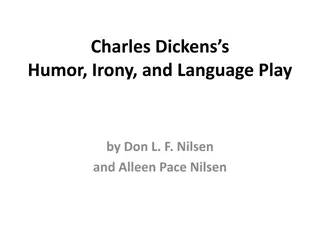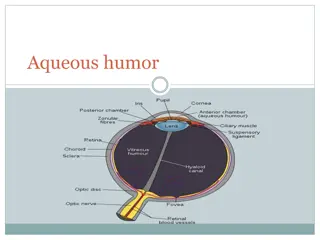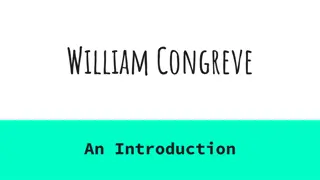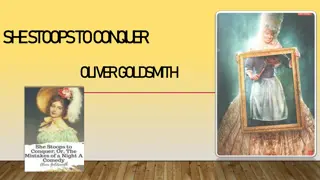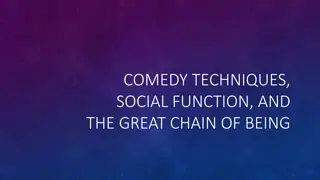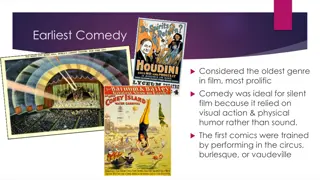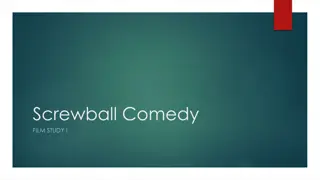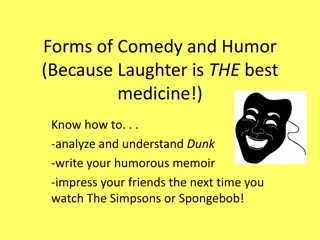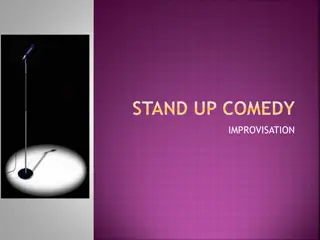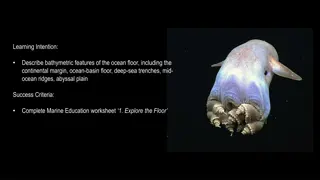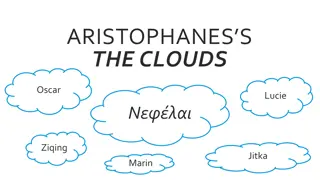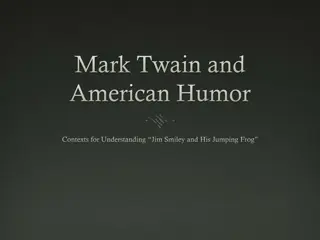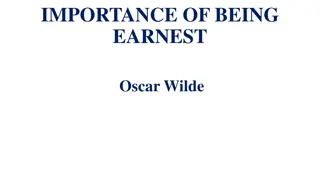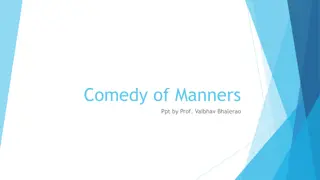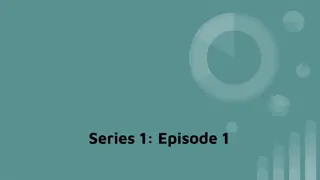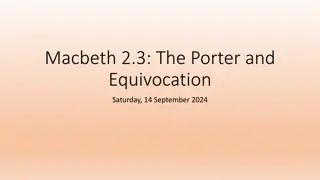Unraveling the Humor: Exploring the Depths of Comedy
Comedy, a genre designed to elicit laughter and mirth, transcends cultural boundaries with its diverse forms like romantic comedy, horror comedy, and political comedy. What makes us laugh varies across individuals and contexts, often rooted in incongruity theory where unexpected twists spark joy. Comedy's universal appeal lies in its ability to offer a unique perspective on everyday situations, making us see the world through a humorous lens.
Download Presentation

Please find below an Image/Link to download the presentation.
The content on the website is provided AS IS for your information and personal use only. It may not be sold, licensed, or shared on other websites without obtaining consent from the author.If you encounter any issues during the download, it is possible that the publisher has removed the file from their server.
You are allowed to download the files provided on this website for personal or commercial use, subject to the condition that they are used lawfully. All files are the property of their respective owners.
The content on the website is provided AS IS for your information and personal use only. It may not be sold, licensed, or shared on other websites without obtaining consent from the author.
E N D
Presentation Transcript
Comedy We call cultural content meant primarily to generate laughter and mirth comedy Most, if not all, genres include comedic elements Some argue that any story where the low-born or put-upon rise to a higher station and a better end is a comedy
Comedy is not content-specific May have to do with just about anything Any setting, everyday or fantastic situations, most any plot, all kinds of characters However, it is a genre that emphasizes the normal and mundane Audience familiarity Combines easily with content-based genres Romantic comedy Horror comedy Political comedy Cop comedy
What is considered funny is not universal What is fearful, sad, exciting are much more widely agreed upon What is funny depends heavily upon the viewing context and audience characteristics as well as content Culturally specific Consequently, comedy does not travel well Action/adventure, Horror, etc. seem to be more effective in crossing borders
Why do we find things funny? 1. Incongruity theory Cognitive scientists have concluded that one of the main sources of pleasure from comedy is the realization that once the content disconfirms our expectations we attempt to make sense of the newly defined content. When we do so we may have a positive affective experience (mirth, happiness, satisfaction) The ah-ha moment
The new connection should not be mundane, but surprising and unusual This sort of connection can range from the subtle to the bizarre
One view is that two scripts are unfolding simultaneously, with one obvious and the other hidden. At some point, the narrative switches the two and the audience member adjusts to the switch. Too difficult--bothersome or offensive People don t get it Too easy not funny, obvious The second script must remain hidden till the right moment
Comedic examples Jokes Punchline provides the unexpected twist Scenes of dialogue where the two actors misunderstand what the other is talking about Actions taken that lead to different consequences than the actor/audience member would expect Satire/Irony considered the most advanced/cerebral of humor
Why do we find things funny? 2. Superiority theory We get an ego boost from looking down on others, enhancing our self-image Humor is a means to denigrate another that does not require physical violence However, the more physically or socially dominant normally has the greater ability to engage in cut- down humor than does the lesser Occasionally, those lower in the hierarchy can claim a victory through wit (especially when the more powerful don t understand the joke)
Feelings of superiority Widely-shared humor based on superiority may trade in stereotypes Allows the comic to say It s just a joke Those who are not the target have a tendency to see such portrayals as harmless, all in good fun Members of the targeted groups often find the portrayals offensive because their identity is tied to the group being made fun of
Comedic examples Silliness/weird behavior Stupidity Cut-down humor, especially when aimed at the powerless
Why do we find things funny? 3. Disposition theory Zillmann: We don t find good things happening to good people to be funny The more the victor is liked and the victim disliked, the greater the humor Perceptions of justice and retaliatory equity Humor and comedy seem exceedingly partial to dishing out put-downs, mishaps, insults and outright humiliations (2000)
Why do we find things funny? 4. Subversion of authority Humans resent being controlled for even good reasons. There is a natural tendency to push back against social control of any sort. Mocking the powerful Flouting social convention
Comedic examples Political humor aimed at the president Jokes about the high and mighty Late-night monologues Celebrity misfortunes, etc. Kids swinging the bat, hitting dad in the groin
Engaging in bad behavior Those who break the normative rules of society are often seen as inherently funny for having done so They may espouse a philosophy that contradicts widely held norms, make a mockery of social custom
Comedic examples Beavis and Butthead The Simpsons 30 Rock
Why do we find things funny? 5. Catharsis theory (Freud) Release of tensions caused by self-imposed limitations meant to meet societal requirements Same sorts of predictions as Subversion of Authority, different mechanism Sexual humor, bad behavior Gross-out humor
Gross-out humor Sick humor Dark humor
Factors often are combined For example, surprise and bad behavior may be mixed together
Important context Comic frame of mind Certain clues in the narrative make clear that one is not to take it seriously Once in a comic frame of mind, misfortunes or criticisms evoke humor rather than pity We are free to react to tendentious (anti-person) humor when a non-tendentious joke, etc. is told Tendentious is more intensely funny but frowned upon socially
Comedy subgenres Romantic/Sex Screwball Dark (black) Satire Buddy Mocumentary Parody Road Slacker



